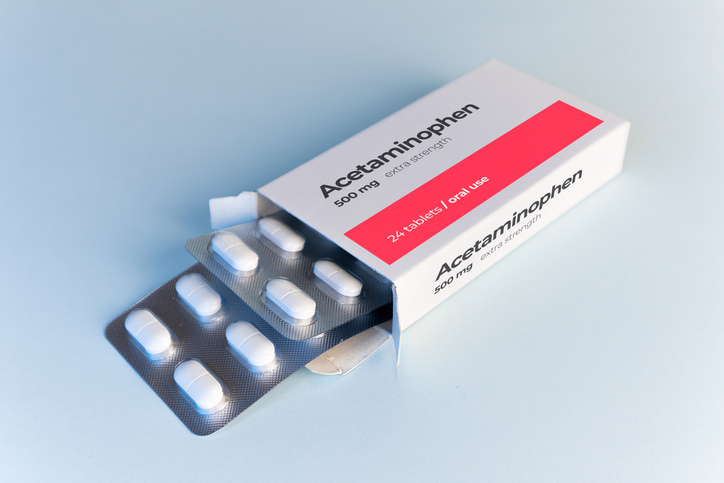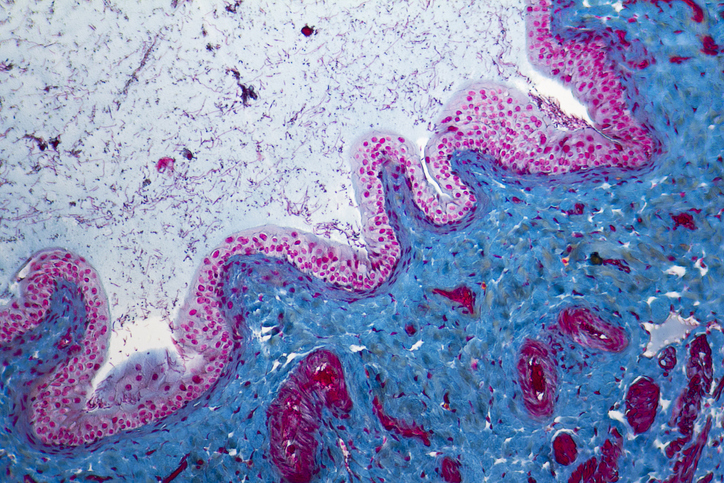Dr. Ada Kumar Highlights the Lack of Protocol on Treating Hospitalized Patients with Gout
By Rob Dillard - Last Updated: April 27, 2023Recent findings from Rheumatology show an “urgent need” for high-quality, prospective studies of patients hospitalized for gout flares.
The systematic review went on to say that there are no studies to date that have looked at how to prevent hospital readmission for gout flares, meaning there is no current protocol or agreement for how hospitalized gout patients should be treated, including whether rheumatology should be involved. This concerning review means that people living with gout could end up (or return to) the hospital despite there being effective treatments to manage the condition.
DocWire News spoke with Dr. Ada Kumar, Medical Director in Medical Affairs at Horizon Therapeutics. Dr. Kumar explained how clinicians can best use their time to educate gout patients, why it’s critical for a rheumatologist to be consulted in the hospital setting regarding gout patients, and how Horizon is supporting the gout community.
See what Dr. Kumar had to say.
DocWire News: Can you give us some background on yourself?
Dr. Ada Kumar: Currently I’m a Medical Director in Medical Affairs at Horizon Therapeutics, and prior to joining Horizon, I practiced radiology for almost 15 years in both academic and private practice settings. I received both my undergraduate and medical school degree from Northwestern University, and then did my radiology residency at Brigham Women’s Hospital and completed a fellowship in musculoskeletal imaging at the University of Chicago. I joined Horizon about 3 years ago, and at first, to be honest, many of my friends were a bit incredulous about my new job. I was often asked, “What is a radiologist doing in pharma.” But actually, there’s so much we can learn through imaging. And at Horizon, I use my radiology skills to improve our understanding of disease states, as well as monitoring responses to therapy.
Imaging really has advanced our knowledge of how we define diseases such as uncontrolled gout. It has transformed the way we think about gout, which traditionally was viewed as a disease of just the joints. But now with imaging, we can redefine gout as more of a chronic broader systemic urate deposition disease. So with imaging, we see urate deposits throughout the body and not just in the joints. My training as a radiologist has enhanced both my role as an educator, as well as as a scientist, in terms of helping fellow physicians and patients really understand the intricacies of gout and other diseases and debunk some of the common myths about gout, both in terms of disease state, as well as appropriate gout management. My focus really has been on emerging research, particularly on new ways that imaging can make impactful changes for both diagnosing and monitoring therapies.
Can you talk to us about the recent review that found that there is an urgent need for studies on patients with gout flares?
This was a really interesting and somewhat alarming study, to be honest. The study was entitled, Improving Outcomes for Patients Hospitalized with Gout: A Systematic Review, and this was a group based out of London. And what they did was they searched multiple online databases using keyword search to find articles that discuss outcomes from hospital admissions in gout patients, which were predominantly due to gout flares, which is sort of when the patients present with these acute joint pains, and how to prevent further admissions from gout flares from occurring. So basically they were looking for well designed studies that can then serve as a benchmark for best practices in managing our gout patients in the context of preventing gout flare hospital admissions.
But despite the fact that gout’s been a disease recognized for thousands of years, there were only 19 articles that they could find that addressed this very important topic. And more surprisingly, is that out of those 19, there were no studies that were high quality perspective, randomized trials that looked at how to prevent readmissions in gout patients hospitalized with flares. So there really is a huge data gap here that needs to be filled, because ultimately, one goal for our gout patients is to present hospitalizations from flares.
Hospitalizations for gout flares has nearly doubled in the U.S. between 1993 and 2011, and this rise really is due to the need for better management of this chronic systemic disease and is shipped in the mindset by the clinician, that gout’s not just an intermittent disease of the joints and managing flares is the most important part of disease management, but rather that the disease should be managed chronically and that gout is a chronic systemic inflammatory disease that needs to be managed aggressively. So gout really is a treatable disease, but we’re just simply not doing a good job in managing these patients, and clearly there’s a need for more high quality studies to identify appropriate and sustainable management strategies to improve interventions in our patients that are suffering from gout. If we can research and develop these tested algorithms or protocols for managing gout and preventing gout flares, this can be really valuable, especially for non-rheumatologists that are managing gout patients.
Additionally, as part of the article, they looked at different studies that examined the impact of having a rheumatologist consulted for gout during hospitalizations. And surprisingly, only about 40% of hospitalizations in the studies actually consulted a rheumatologist. However, when a rheumatologist was consulted, they had better outcomes. They didn’t necessarily have shorter length of duration of hospitalization, but they were more likely to have consistent rheumatology follow-ups and more frequently were put on urate-lowering therapy. And this is important when we think about what is the appropriate long term management and strategic goals for our patients with gout.
Another really salient point of this review was that it studied the administration of urate-lowering therapies, and it showed that the continuity of urate-lowering therapies at appropriate doses were associated with fewer emergency room visits, which again is one of our main goals in treating our patients with gout. And patients that had multiple at hospital admissions often had more comorbidities, including heart disease, as well as more advanced disease, such as tophaceous disease or erosive disease, which is a consequence of longstanding urate deposition in the joint. So really again, emphasizing that gout patients are not necessarily appropriately managed, and this leads to more gout flares and more hospitalization from gout flares. I feel this publication really was a call to action to get more research and high quality studies on this really important topic.
How can clinicians best use their time to educate patients on gout and how to treat it?
Education is key, and the hospital is a really crucial and great time for clinicians to educate patients on gout, because when the patients are in the hospital, they’re not feeling well, they’re miserable. And so they tend to really understand the severity of gout and the severity of the situation, which makes them oftentimes more receptive to teachings from physicians and potentially could increase their compliance to therapy. So, in the hospital, a gout specialist or rheumatologist is oftentimes, or may be, consulted. And this is often time the first time a gout patient may actually interact with a rheumatologist, even though they may have had gout for years and years. Rheumatologists have more specialized training to manage these conditions, so it’s really important to make this initial connection with this type of subspecialist that can happen in the hospital, which can then continue long-term management in a more outpatient setting.
So again, gout’s a really treatable condition, but it’s often mismanaged, and oftentimes patient compliance to their medication regimen is poor, which ultimately leads to the complications that we see in gout patients, including hospitalizations. But if we can properly educate our patients with gout on the systemic implications of gout and what the goals of therapy are, we can possibly increase patient adherence to therapy, which is only a great thing. Clinicians really need to use this time to emphasize the importance of proactively treating gout and not just treating gout during flares, and educating on the various therapies that can combat the issue of elevated uric acid levels, which is ultimately what causes the gout flares and can prevent future hospitalizations from gout flares and long-term complications.
One important thing to emphasize is spending time and building trust with patients, which again, while in their hospital, may actually be a really great opportunistic time, since they’re somewhat of a captive audience. They really have nowhere else to go. Gout management is really tricky because of the way that the disease manifests with flares. This is often characterized with really severe debilitating joint pain.
But when these flares, when they’re done, oftentimes there are these periods of rest, or we call these these intercritical periods where patients are asymptomatic. And unfortunately, when we’re asymptomatic, oftentimes we think that there’s nothing going on. So there’s a broad misconception that when we’re asymptomatic, there’s no damage being done. But actually, through imaging, we can see that urate deposition and it’s resultant damage is occurring even during these asymptomatic periods. So these damages may include bone erosions, cartilage destruction, local inflammation, systemic inflammation, and this is occurring chronically in our patients with gout.
And so, therefore, the goal really should be to remove all the urate deposits throughout the body, which is the cause of the flares and the cause of the local and systemic inflammation, and not just treat the flares with an anti-inflammatory agent, which is oftentimes what happens. This really doesn’t do anything to lower serum uric acid levels. It does improve patients feelings of pain at the time. So it’s kind of more of a short-term therapy rather than a long-term therapy. But this is why patient education is so important, because oftentimes when urate-lowering therapies are started, which again is the key, we mobilization of urate, which actually can induce more gout flare. So it’s almost counterintuitive. You would think if we’re appropriately treating a disease, we should decrease the amount of pain. But initially, with gout, we actually can increase the number of flares.
And so a lot of times patients, understandably so, feel like, “Well, if I’m having more pain and more frequent episodes of pain, the medication isn’t working.” Or, “I’m just going to stop the medication. I felt better before I took the medication. And this is really when education is crucial. We have to educate the patient to say, “No, actually, gout flares, or an increase incidence of gout flares means the medication is working. Just whole tight. After a period of time, we’re going to remove all that urate from your body, and you’re no longer going to have gout flares and your gout’s almost been basically going to be treated. And this is really just going to, over the long-term, enhance your quality of life.” So patient education is really an important pathway to maintain adherence and compliance to therapy, and ultimately help manage this condition.
How is Horizon Therapeutics supporting the gout community?
Yeah. At Horizon, we’re really committed to discovering and delivering new solutions for people living with uncontrolled gout. We’re invested in better understanding the disease state of gout, which really is evolving right now. There’s emerging data in literature, some of which has been supported by Horizon, showing that urate deposition is actually occurring, not just in the joints, but systematically throughout the body, including the coronary arteries, the kidneys, and even the spine. And at Horizon, we collaborate with these world renowned leaders in gout research, working to better educate the community, as well as elucidate more about the disease, which sadly has been mischaracterized for thousands of years.
We then use these learnings to educate the gout community through podcasts, through lectures, grand rounds, publications, interviews like these. We believe it’s our duty to disseminate this knowledge in order to elevate the urgency, to appropriately manage our patient suffering with gout and hopefully help the community of patients.
We also continue to invest in our medicines. Pegloticase is one of them, which is a medication for uncontrolled gout, and we’re looking to increase its benefit and improve the patient experience. We’re currently involved in research using immunomodulating therapies in order to help get more patients, get a complete response to pegloticase, and improve the advocacy and safety of the drug. We continually partner with advocacy groups to hear patients’ voices and hear how we can help the gout community. So Horizon really goes beyond just providing therapies. We engage with the community, both clinicians and patients. We listen, we learn, and we provide support to improve the experience for patients suffering with gout. At Horizon, we really believe in patients first and we really try to make a difference for patients and their caregivers every day.
Any closing thoughts?
Yeah. The rise in hospitalizations of gout patients is really disheartening. Gout is a treatable disease, but it’s sadly often mismanaged, and it just illustrates the burden of this disease and reinforces the importance of clinicians recognizing the urgency of treating its underlying cause, which is uric acid buildup. Clinicians really need to pay attention to gout-like symptoms in their patients and aim to treat these as quickly as possible, but also they have to understand that these symptoms, these gout flares, are occurring because there’s an overwhelming amount of uric acid, which is deposited throughout the body. And I think this article really emphasizes this need for more well-controlled studies and trials that are going to help us better manage patients with gout. Sadly, a lot of times gout is pushed to the side with other arthropathies, like rheumatoid arthritis, being put more in the spotlight. But I think this article and a lot of other art like this have shown us that we really need to start investing more in understanding gout, and ultimately helping the gout community.







 © 2025 Mashup Media, LLC, a Formedics Property. All Rights Reserved.
© 2025 Mashup Media, LLC, a Formedics Property. All Rights Reserved.